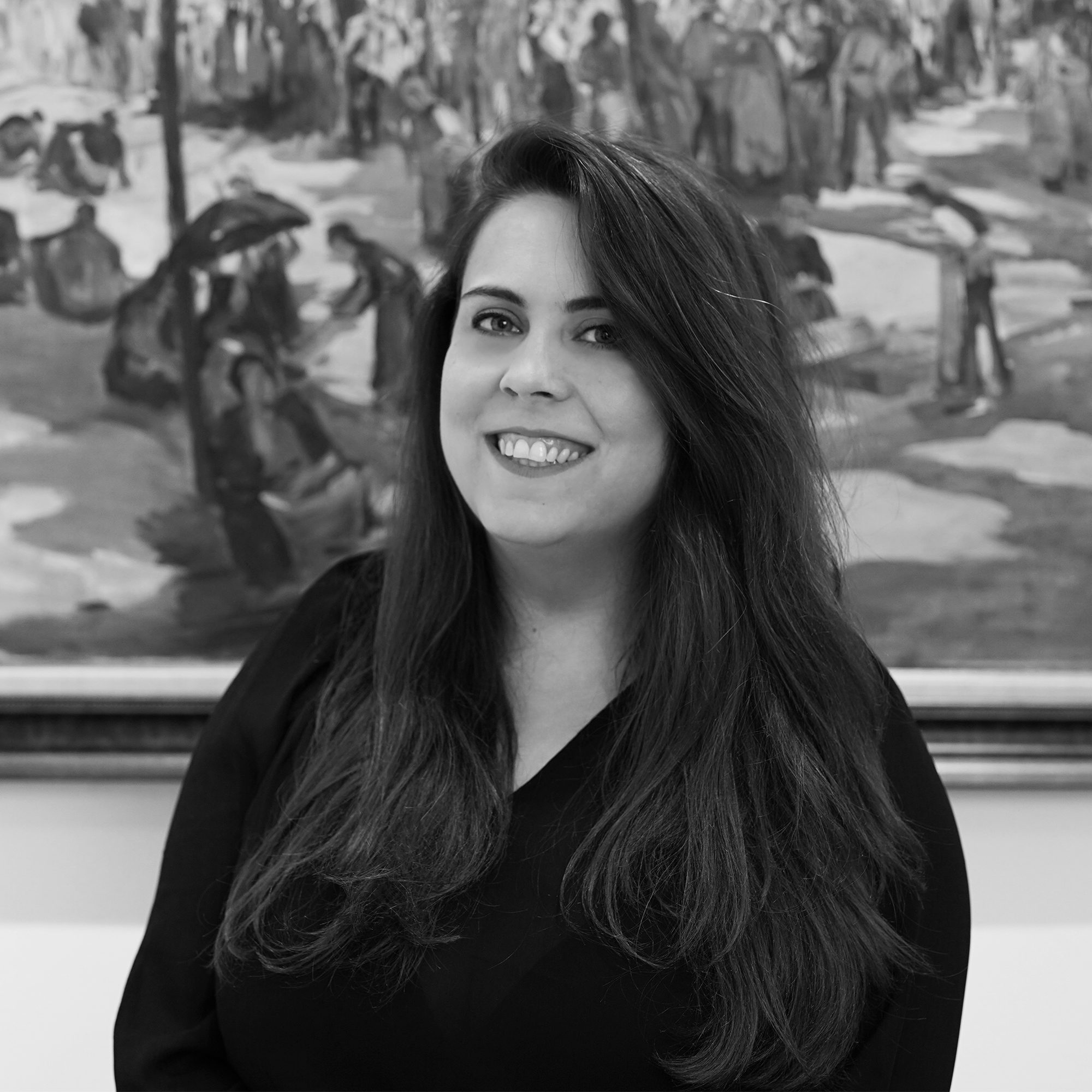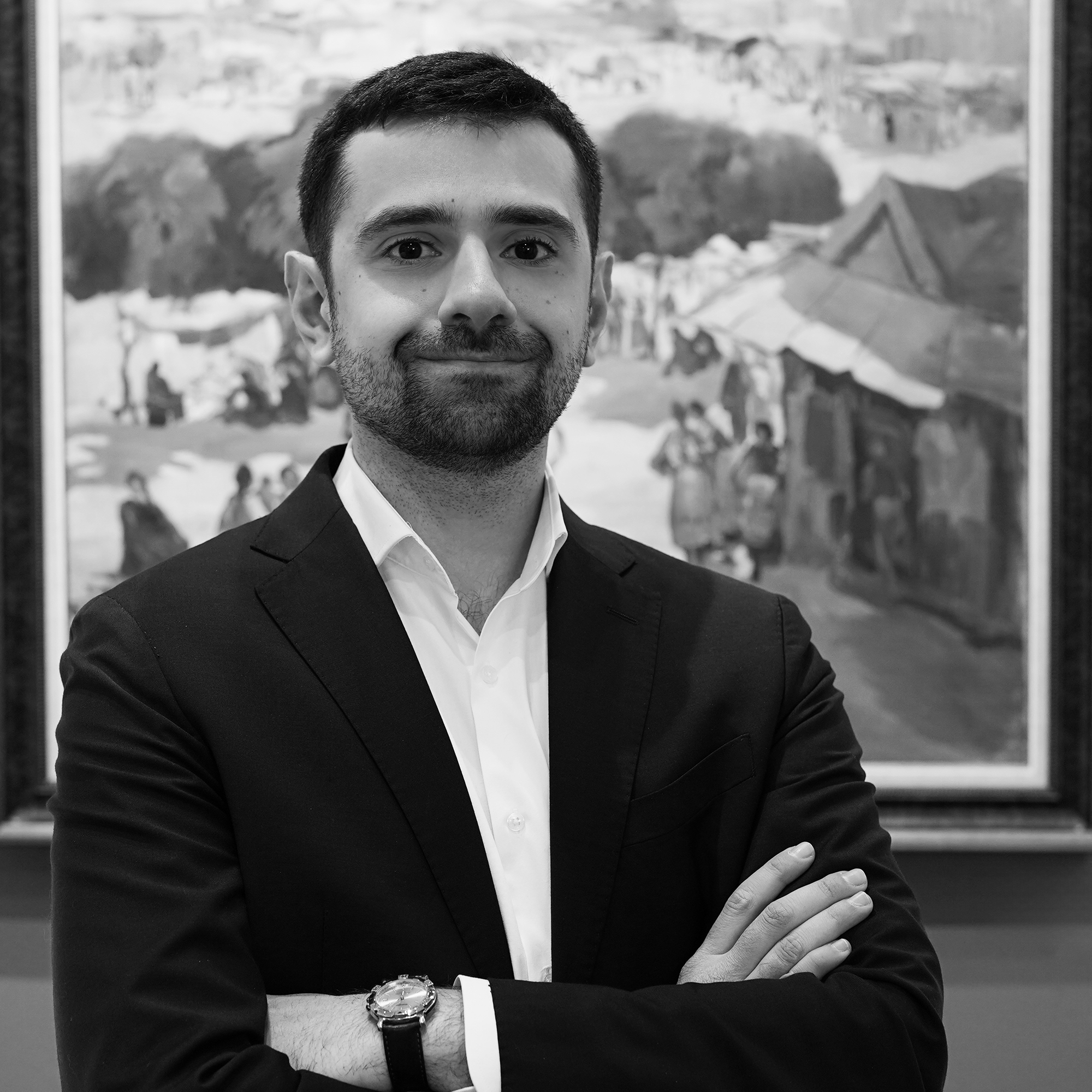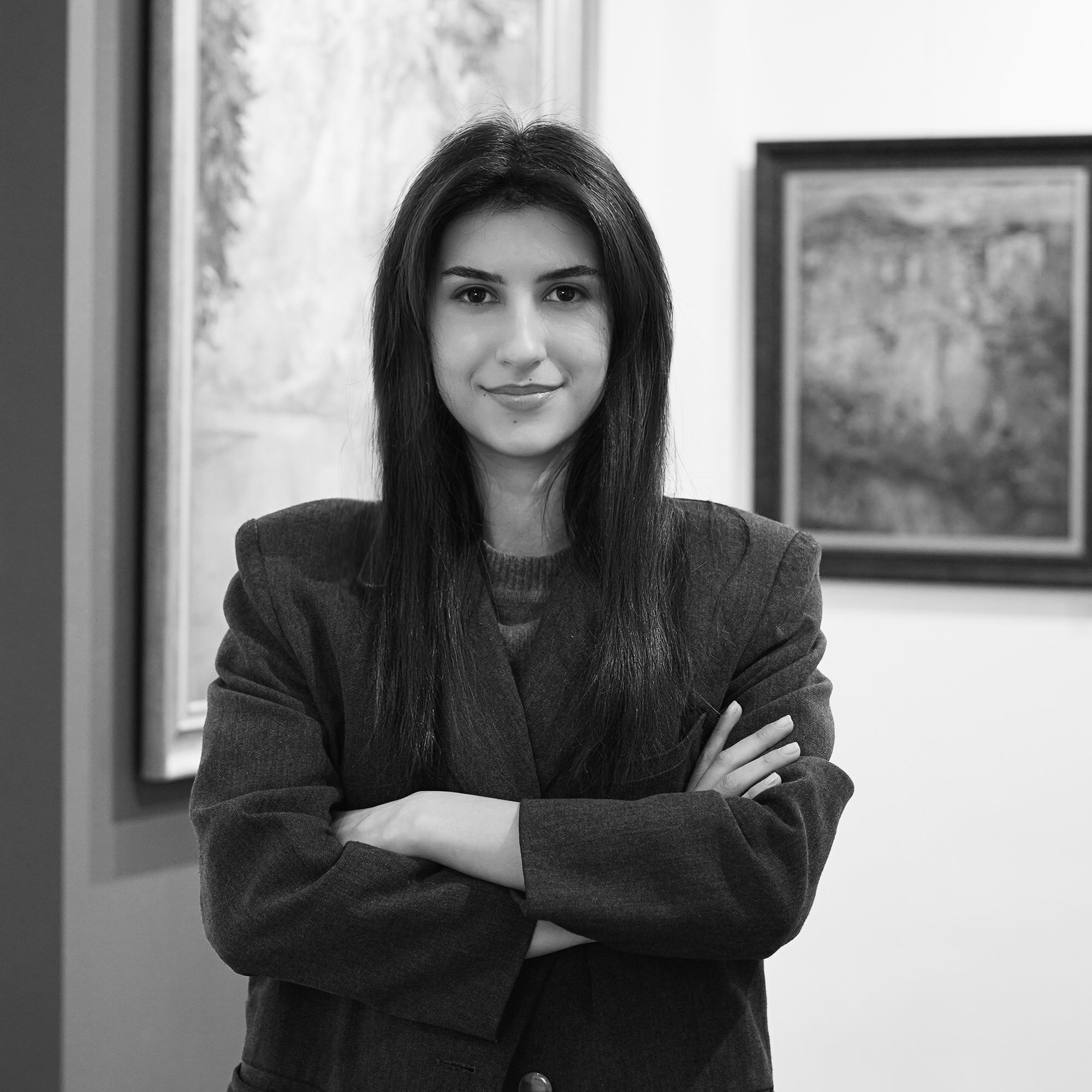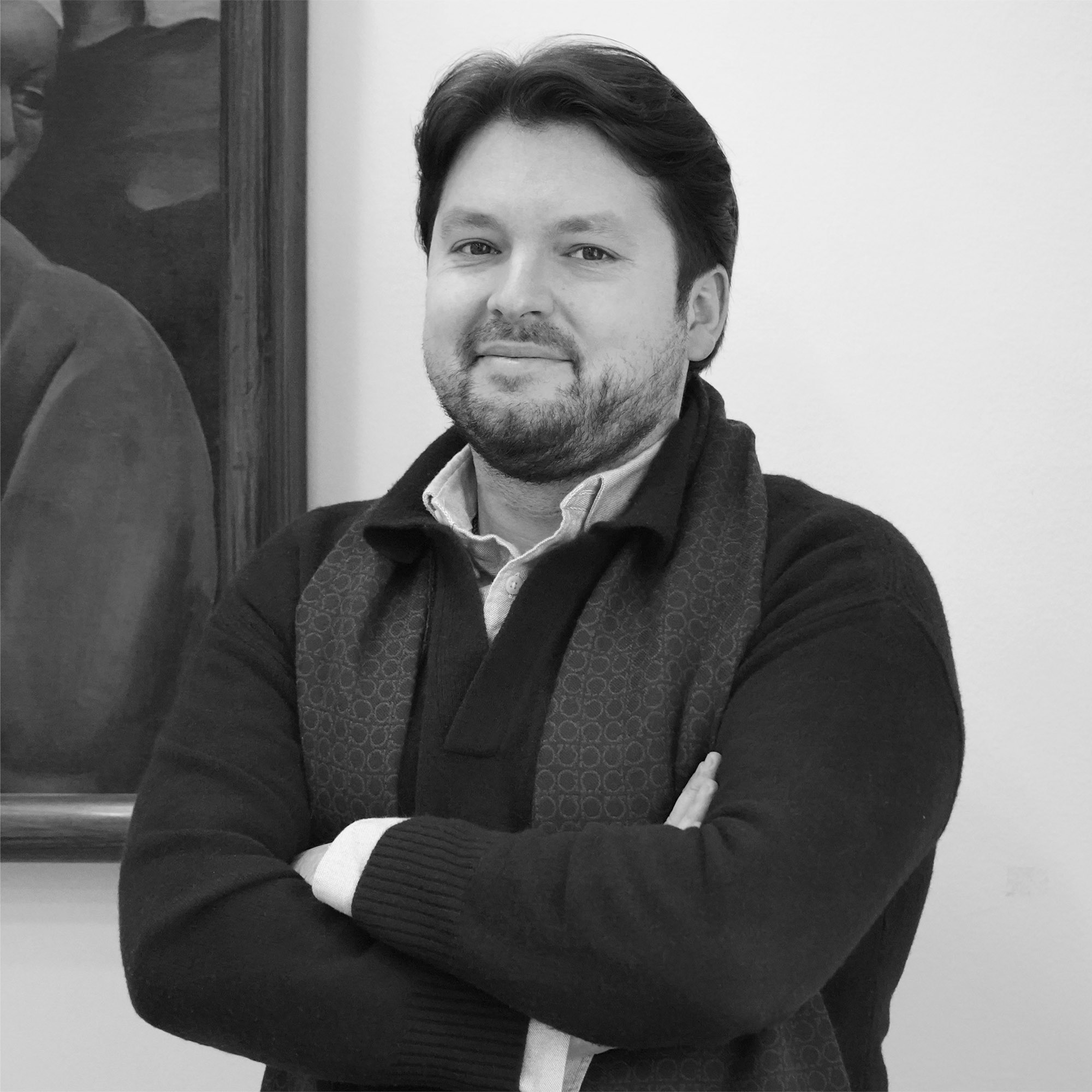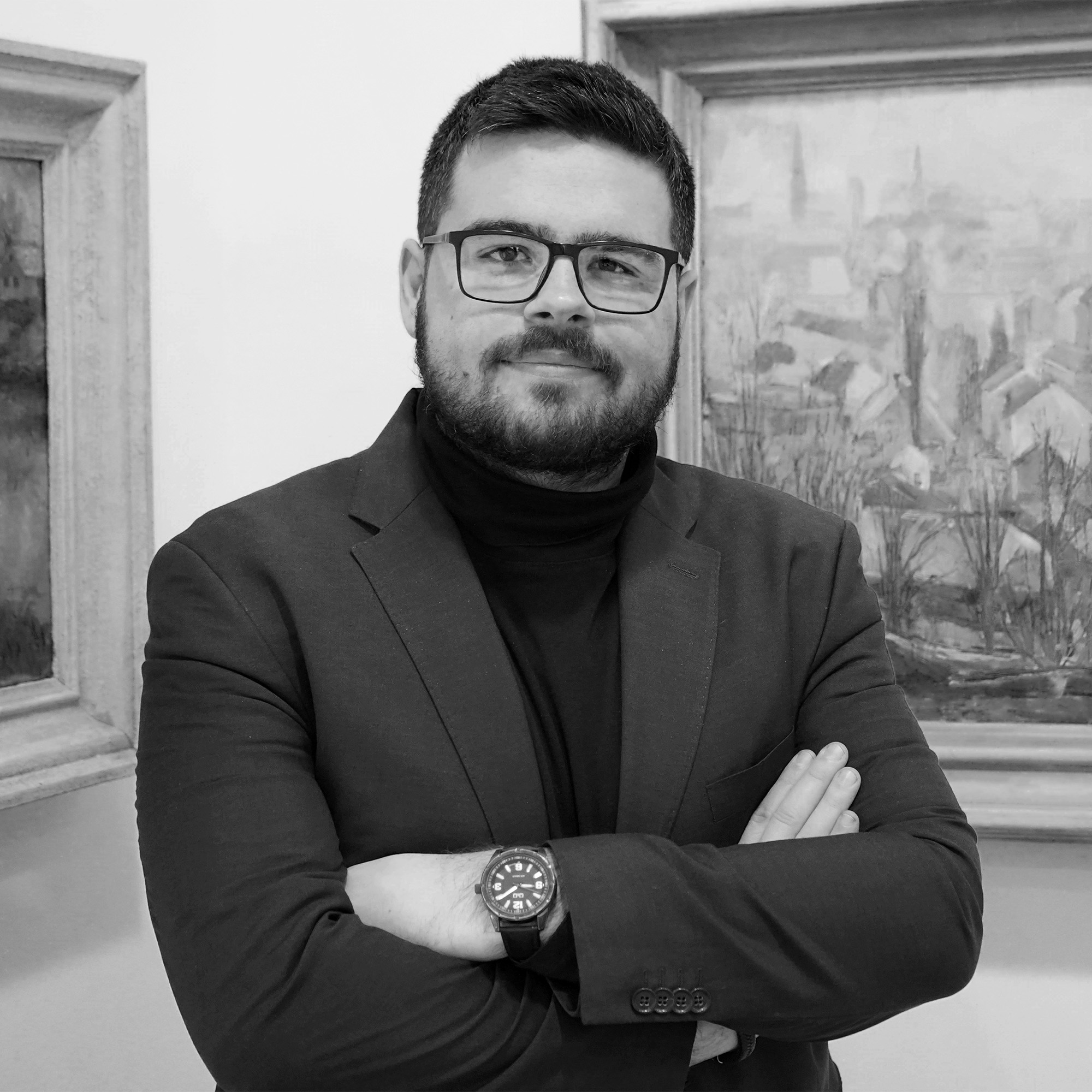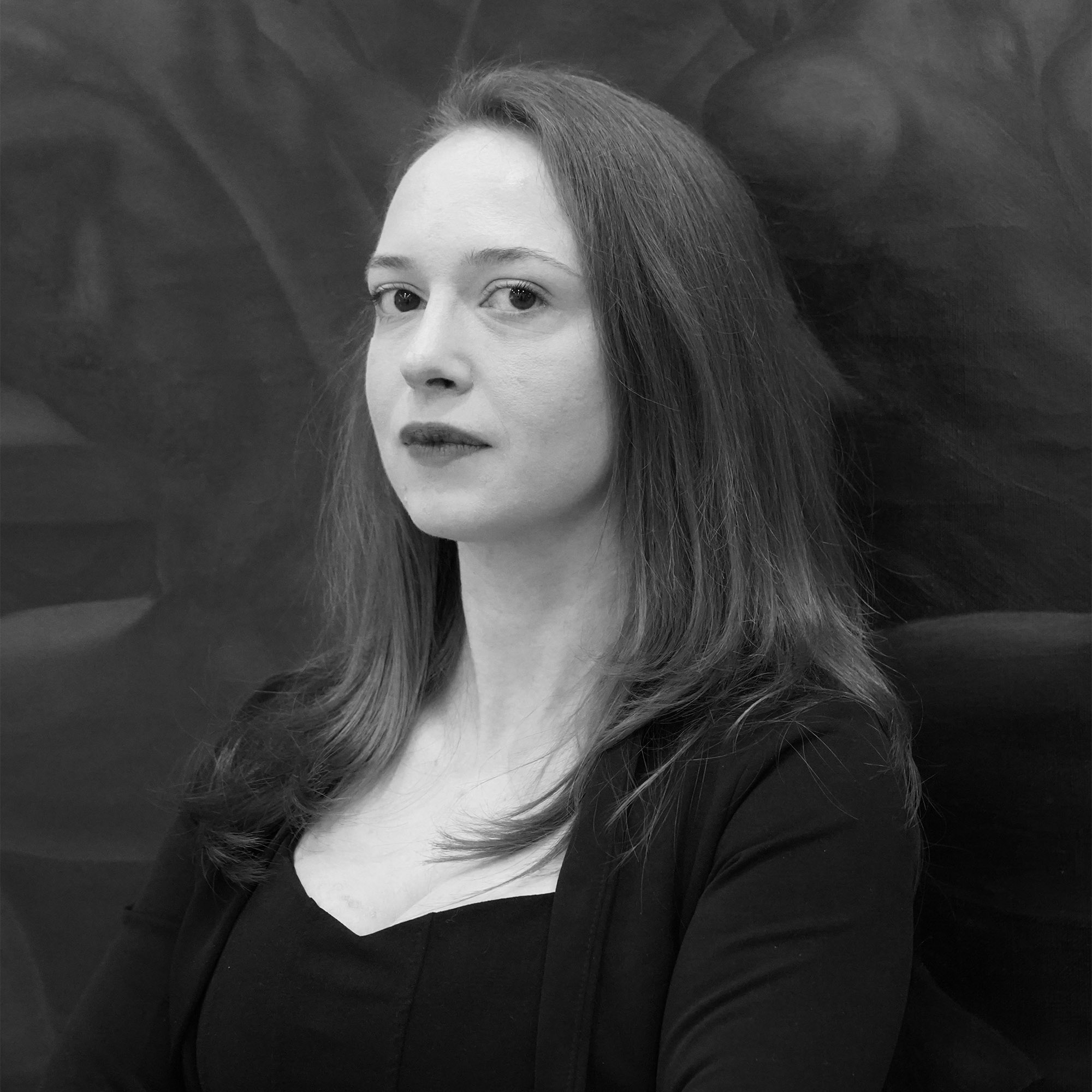"Tražite umjetnika"
Evaluation Department
Evaluation Department
Old Masters and Classical Bulgarian Art (19th century)
The 19th century was one of the most complex periods in the Bulgarian history, and its artistic heritage pursued rapid and profound changes in all areas. During the 19th century, art transitioned from the traditions of the Bulgarian religious art and the inherent emergence of the easel portrait (the main genre in the period of National Revival), to the dawn of Modernity and the beginning of the influence of the European Schools of Art.
The most important artists to be mentioned are: Zahari Zograf, Dimitar Dobrovich, Stanislav Dospevski, Nikolay Pavlovich, Georgi Danchov, Hristo Tsokev.
Modern Bulgarian Art (20th century)
Modernism comprises the most liquid Bulgarian artists and the most valuable paintings, sculptures and graphic works of the end of the 19th century and of the first half of the 20th century.
The opening of the first State Arts School – later Academy of Arts – in Sofia in 1896 and the Society for Support of Art in Bulgaria in 1894, were some of the most significant events that will change and develop the Bulgarian Artistic Life in the 20th century.
The first professors at the State Arts School, Jan Václav (Ivan) Mrkvička, Anton Mitov, Boris Schatz, Jaroslav Věšín, Ivan Angelov, Zheko Spiridonov, were educated in Munich or Florence.
They shaped the artistic scene, explored new and personal areas of interest closer to the style and subjects of the Modern European Art Schools and laid the foundation for later artists such as Vladimir Dimitrov, Tsanko Lavrenov, Zlatyo Boyadjiev and Ilya Petrov.
Subsequent generations of artists such as Nikola Petrov, Atanas Mihov, Elena Karamihaylova, Alexander Mutafov opposed the classical realism of their teachers, paving the way for Bulgarian art to absorb modern European influences originating from Impressionism, Symbolism and Secession.
Post-war and Contemporary Art
Artmark grants special attention to the Post-war and Contemporary Art auctions and their investment potential, as it supports living artists and contemporary creativity, while believes that we all should take a proud interest in the art of our times.
After World War II, Socialist Realism dominated Bulgarian artistic circles. Its influence was seen in the broad historical themes that were adopted by artists in genres ranging from still-life paintings or portraits to regional landscapes, glorifying the working classes and the feasts of the partisan movement.
In 1961, the First Youth Exhibition saw the emergence of a new generation of artists. A wave of bright, creative artists was settling into the art scene, who would change the way Bulgarian art was perceived internationally: Georgi Baev, Kalina Taseva, Svetlin Rusev, Stefan Gatsev, Ioan Leviev and others.
The interest in Contemporary Art has grown over the years, while important international auction houses included Bulgarian artists in their sale events.
European Art, Prints & Multiples
Artmark’s European Art, Prints and Multiples events offer the very best examples of works from schools and movements ranging from Orientalism to Barbizon, and from Academic to Contemporary. Our team will source the finest examples from Bulgaria, Eastern or Western Europe to prepare highly curated auctions.
Collectibles
Our department covers all aspects of the historical and documentary collecting fields and includes a vast array of items, with a focus on the Bulgarian royalty related collectibles, like signed photographs or royal wedding memorabilia, but also jewelry, letters, documents and decrees, swords and militaria, maps and flags, as well as other historical artifacts from the Bulgarian monarchy period (1887-1946).
Decorative Art and Jewelry
For collectors of decorative art and jewelry, Artmark offers for sale a large array of art pieces, European and Oriental china collections, silverware, or valuable items made of glass, manually woven carpets, ornamental statuettes, small-size fine furniture, as well as vintage or contemporary design jewelry.
Religious Art
Religious art includes a vast array of items, from paintings and sculptures to personal or sacred ceremonial objects.
The importance of this subject in the Bulgarian History and Culture has led to the emergence of periodic sales events dedicated to this distinctive topic, which includes sacred, ceremonial objects such as: icons on wood, manuscripts, print-work, or silverware and metalwork.
Pošiljka i procjena
Odjel za procjenu
Stari majstori i klasična hrvatska umjetnost (19. stoljeće)
Procvat hrvatske umjetnosti i kulture početkom 19. st. obilježen je prvim lokalnim umjetnicima, poput Vjekoslava Karasa, koji su utrli put novoj generaciji umjetnika koje danas smatramo hrvatskim klasicima. Druga polovica 19. st. obilježena je djelovanjem umjetnika poput Mate Celestina Medovića, Nikole Mašića, Mencija Clementa Crnčića i, naravno, Vlahe Bukovca koji predstavljaju samo neke od istaknutih umjetnika koji su utemeljili hrvatsku likovnu tradiciju.
Moderna umjetnost (prva polovica 20. st.)
Početkom 20. st. nastupa nova generacija umjetnika, obrazovana većinom na njemačkim akademijama (München) kao i u Parizu, koji uvode moderne likovne koncepte i tehnike te time smještaju hrvatsku umjetnost u središte centralne europske kulture. Miroslav Kraljević i Josip Račić (smatrani prvim hrvatskim modernim slikarima), Vladimir Becić, Ljubo Babić, Jerolim Miše samo su neki od predstavnika nove umjetnosti 20.st.
Avangardna i naivna umjenost
Međuratno razdoblje dalo je neke od najznačajnijih hrvatskih likovnih grupa i pokreta: Praška četvorica (Vilko Gecan, Milivoj Uzelac, Marijan Trepše i Vladimir Varlaj), avangardne vizije časopisa Zenit, grupa Zemlja s Krstom Hegedušićem, rođenje naivne umjetnosti oko Hlebine i neizostavan opus Ivana Meštrovića, nedvojbeno najpoznatiji hrvatski umjetnik do danas.
Poslijeratna i suvremena umjenost
S krajem Drugog svjetskog rata i u desetljećima stabilnosti koja slijede, svijet umjetnosti potresle su revolucionarne promijene. Apstraktni ekspresionizam i novi avangardni pokreti 50-ih i 60-ih godina odjeknuli su hrvatskom likovnom scenom. Djelovanje grupa EXAT 51 (Ivan Picelj, Vjenceslav Richter) i Gorgona (Josip Vaništa, Julije Knifer, Marijan Jevšovar, Đuro Seder, Ivan Kožarić) gurnulo je hrvatsku umjetnost u postmodernu da bi izložbe Novih tendencija (1961.-1973.), sažimanjem svih promjena na hrvatskoj likovnoj sceni, otvorile put novim generacijama suvremenih umjetnika i vezama s čitavim svijetom.
Europska umjetnost, otisci i reprodukcije
Artmark Hrvatska, Odjel za europsku umjetnost, otiske i reprodukcije predstavlja najvažnije i najprivlačnije likovne pokrete koji nadilaze nacionalne granice. Od flamanskih starih majstora do avangardnih pokreta istočne Europe, uz dodatak izrazito prepoznatljivih imena moderne umjetnosti i nadrealizma predstavljamo najsuvremeniji izbor europske umjetnosti.
Hrvatska povijest i suveniri
Sa značajnom povijesti unutar Srednje Europe, ali i kao dio zapadnog balkanskog kruga, Hrvatska kolekcionarima i ljubiteljima povijesti nudi izrazito bogatu baštinu. Od perioda kraljevstva do 20. st. u Jugoslaviji, predstavljamo odabrane fragmente iz povijesti državnika, povijesnih ličnosti i plemstva.
